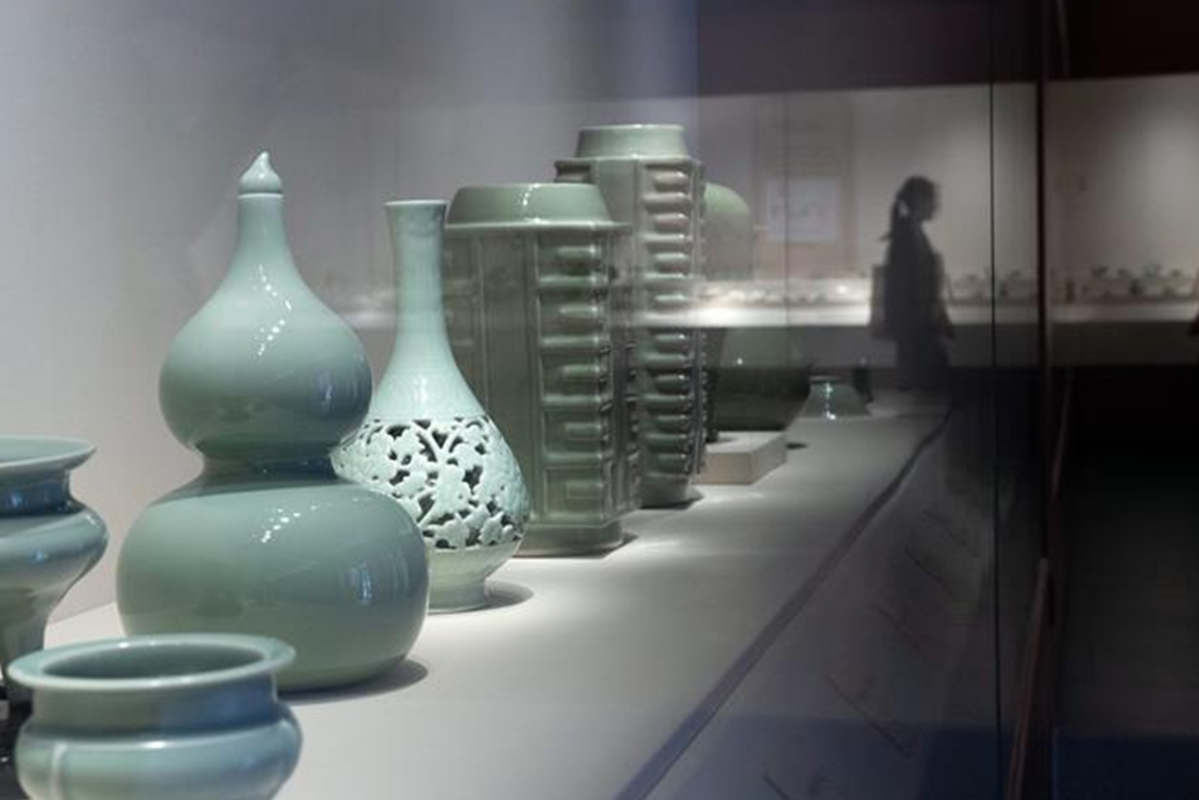Gangjin, located on the coast of South Jeolla Province in Korea, is famous for being the place of exile of the sage Jeong Yak-yong, numerous islands, and the home of beautiful Celadon. It’s not a well-known place yet, but it’s an option worth considering if you’re going to Jeolla-do. Now, shall we fall in love with Gangjin’s charm?
Celadon Museum & Digital Museum
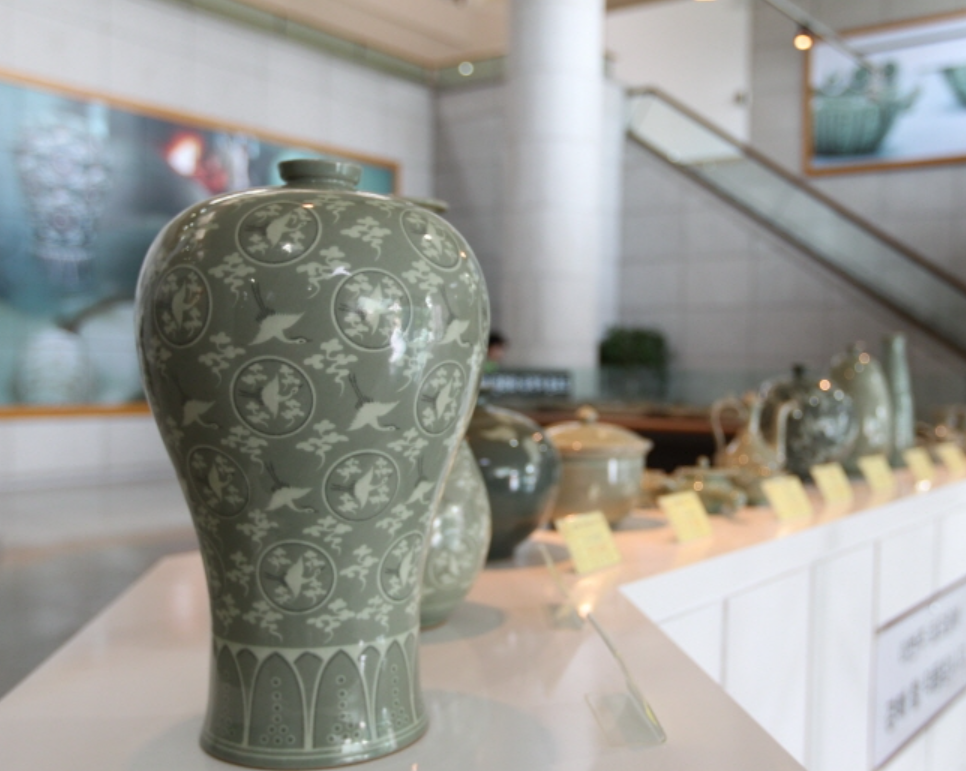
A shipwreck off the coast of Taean in 2007 yielded over 1,300 pieces of Goryeo celadon and jars. The wooden tablets (letters carved on pieces of wood) unearthed from the ship proved that many of these celadons were created in Gangjin around 800 years ago and transported to Kaesong’s royal family and nobles. These findings demonstrate that Gangjin is a significant Goryeo Celadon manufacturing site. If you wish to discover Celadon’s charm, the Celadon Museum is the perfect spot.
When you enter the museum, the first thing you see are the massive kiln ruins that remain throughout the space. At first glance, it appears to be a basic pile of dirt, but watching the exhibition at the Celadon Museum will help you understand the ruins. The museum houses and displays about 30,000 objects discovered in the ruins, providing a detailed picture of Celadon’s growth process. A special exhibition is currently taking place on the first floor, featuring antiquities excavated from the Jeolla Military Fortress.
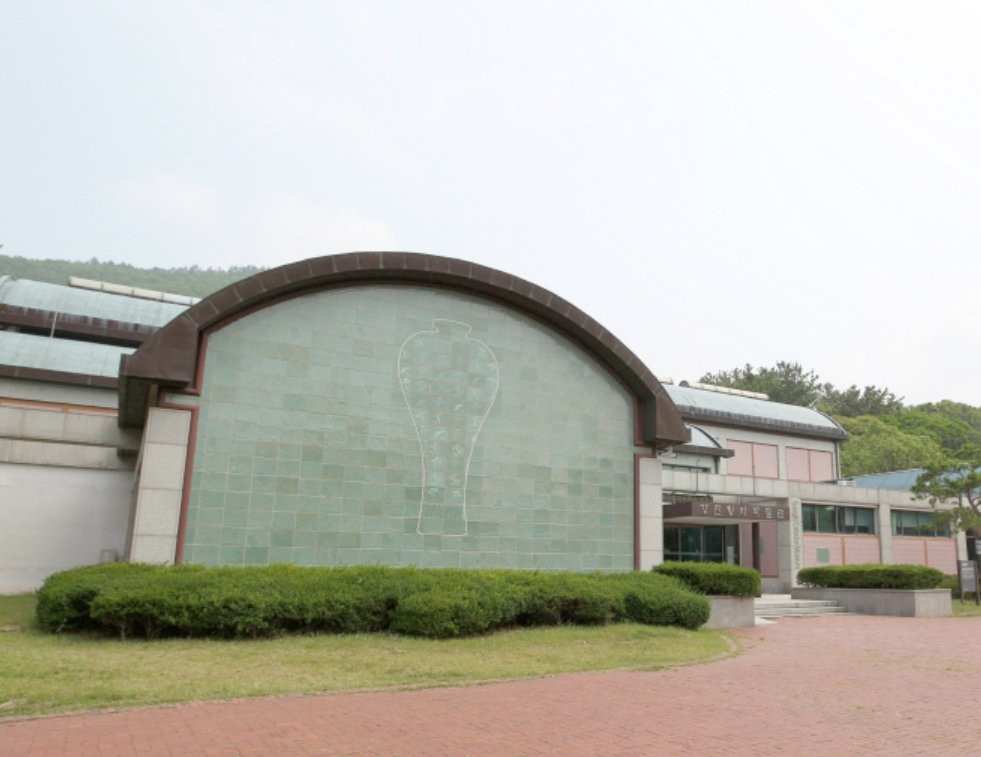
At the Digital Museum next to the Celadon Museum, you can experience Celadon in a unique way. The highlight of this place is definitely the Infinity Mirror Zone. The colorful celadon reflected infinitely in a space with mirrors on all sides creates a fantastic atmosphere. Thanks to LED lighting, anyone, regardless of gender or age, can take a photo of their life. If you are with your child, you can enjoy Celadon-themed digital content or visit the game zone, where you can experience the Celadon production process through games.
The greatest approach to finding Celadon’s distinct charm is to imagine. Let’s consider what would be eaten in a bamboo-shaped bowl, who would have decorated their room with a lion-shaped incense burner, and what I would eat in this bowl. Celadon, which appeared to be a distant remnant from a textbook, may soon become an interior design item worth opening your checkbook for. If you want to have a better sense of Celadon’s charm, come to the forthcoming Celadon Festival and engage in a variety of experiential events.
Website: http://www.celadon.go.kr/
Fee: Adults: 2,000 won; Youth: 1,500 won
Baekryunsa with Camellia Forest Trail
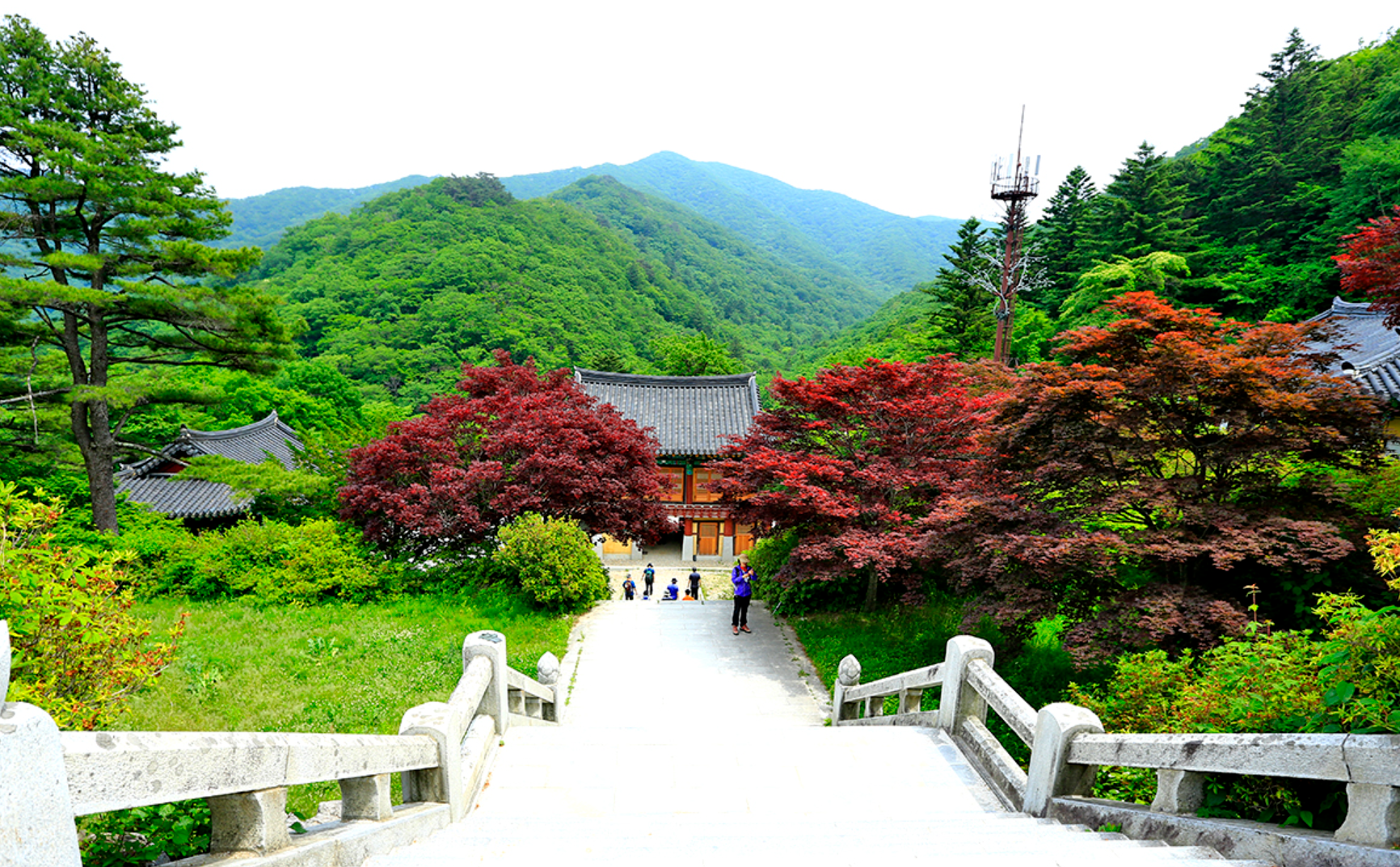
Even if you travel by car, you may see a beautiful camellia grove in front of Baekryunsa Temple‘s main gate. The Camellia Forest, which contains approximately 1,500 camellia trees, is so valuable and beautiful that it has been named a natural monument. The trees are so dense that there is a soothing gloom even in full daylight. The sunlight that filters through the foliage shines the fallen blossoms like a spotlight, creating a mystical mood. Camellias, unlike other trees, fall in groups; thus, their beauty multiplies when the blossoms fall.
Enjoy the quiet harbor and beaches of Gaudo
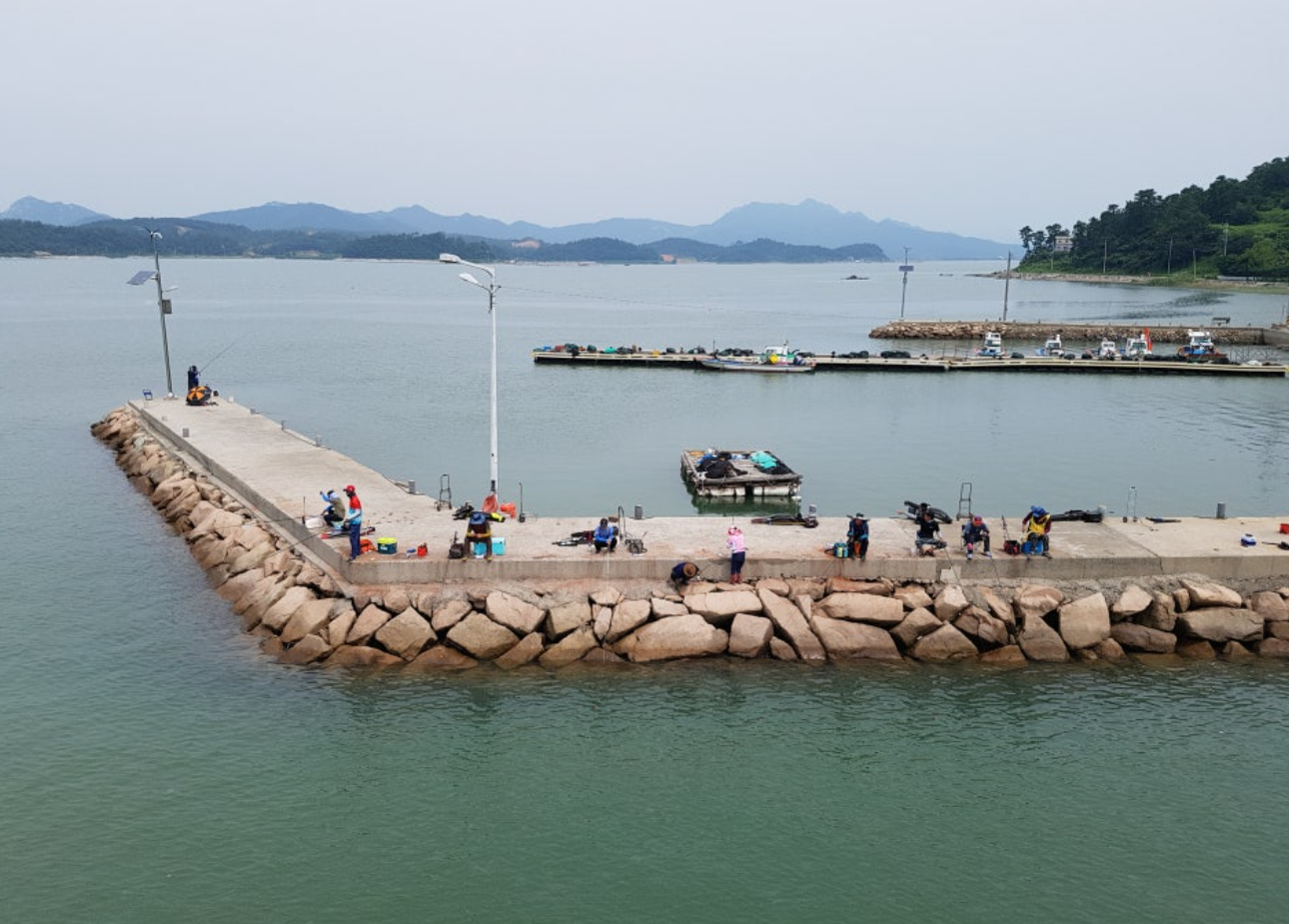
The road from the Celadon Museum to Gaudo Island. The panoramic view of Gangjin Bay unfolds on the left. After running for about 5 minutes, you will reach the marine walking bridge and Jeodu Suspension Bridge that lead to Gaudo Island. Gaudo is a small island located in the middle of Gangjin Bay, but the happiness that can be enjoyed within it is by no means small. Let’s take a walk on the ‘Together Sea Road’, an ecological trail that circles the island along the coastline. If you walk slowly, it takes about 1 hour and 30 minutes. The time spent talking with family with the sound of waves in the background will be a great gift to cherish.
At the top of Gaudo Island, there is a celadon-shaped tower with an observatory and zip-track facilities. You can climb up on foot, but for the elderly or families with young children, taking the monorail is a good option. If you start from the boarding area at the beginning of Jeodu Suspension Bridge, you will reach the summit in 5 minutes. During the 10-minute stop, you can go up to the observatory and enjoy the scenery of Gangjin Bay, then take the monorail back down, or if you want to enjoy the thrill, you can try the zip track.
Dasan Chodang-Wise Man’s Hideout
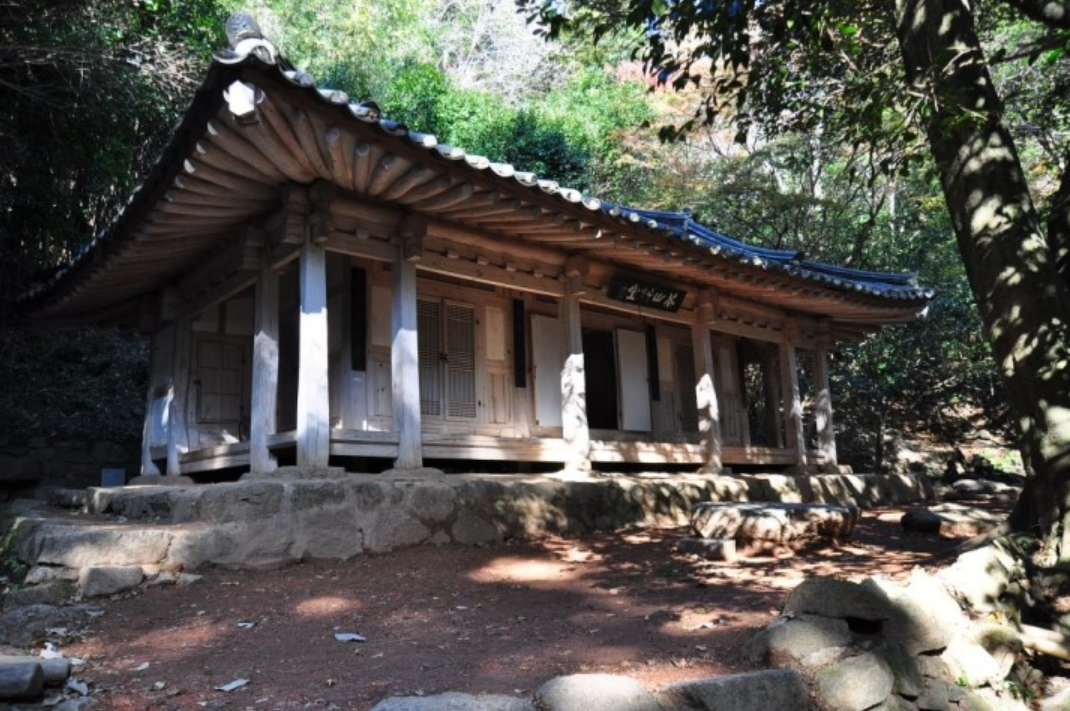
Dasan Chodang is the place where Dasan Jeong Yak-yong, a representative scholar of the Joseon Dynasty, lived in exile for about 10 years and is located at the entrance of Manduksan Mountain. The 300-meter uphill climb from the parking lot to Dasan Elementary School is so steep that it takes your breath away. At the end of the road, Dasan Chodang reveals its neat appearance.
As you can see from the name, which is a combination of the characters for ‘grass cho’ and ‘jip dang’, it was originally a small thatched house, but during the restoration work, it was remodeled into a modern tile-roofed house. It is unlikely that a criminal who received the severe punishment of exile would have lived in such an elegant house. I wonder what it would have been like if it had been restored to its original state so that we could more deeply empathize with the hardships of Dasan, who was wrongfully exiled after being embroiled in a factional fight.
There is a pond to the right of Dasan Chodang. It was originally a little spring, but Dasan enlarged it by channeling water from the spring onto the mountain via a trough. Although no evidence remains, it is reported that nine stone steps were built on the slope near Chodang, with crops such as radishes, chives, green onions, and crown crowns planted on each floor.
If you pass the pond and go up a few steps, Cheonilgak, a pavilion standing tall towards Gangjin Bay, appears. Cheonilgak is a building that did not exist during the time of Dasan’s exile and was rebuilt in Gangjin-gun in 1975 with the idea that he would stand here and look at Gangjin Bay to soothe his mind when he was lonely. When you climb up to Cheonilgak and look out over Gangjin Bay, the scenery is truly spectacular. A sense of harmonious stability is felt as the sky, mountains, sea, and rice fields are stacked one after another in one frame. I think that Dasan’s lonely heart must have been comforted.
Operating hours: 09:00–18:00
Fee: Free
Gangjin Book Bread. A special, meaningful and delicious souvenir
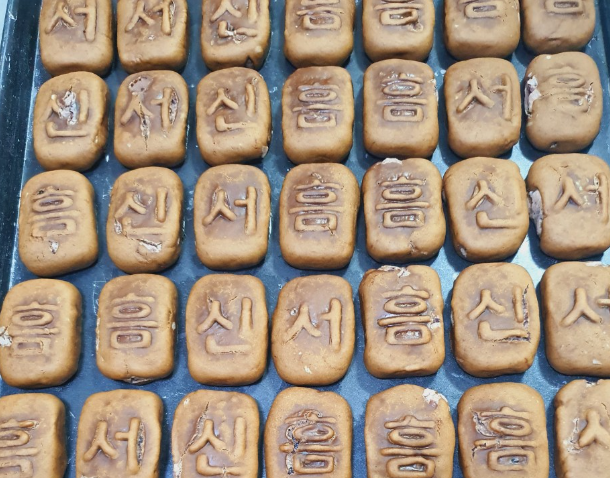
The store with so many books appears to be a bookstore, but it is not. Gangjin Book Bread sells bread, not books. Bread prepared with Korean wheat is sold in colorful boxes shaped like antique books. This bread, inspired by Dasan Jeong Yak-yong’s teachings, is available in four flavors: green tea and oats, both Gangjin specialties, as well as cocoa and coffee. White, crimson, and pea bean pastes are evenly spread throughout the bread. If you slightly warm it in the microwave and eat it with milk, it will taste more nutty and light.
Dasan’s novels, ‘Gangjinchaekppang’, are prominently etched on the bread. Because it is hand-pressed, the shape varies, but isn’t that part of the appeal of handmade products? It is made with healthy ingredients, has colorful packaging, and possesses the positive energy of fertility, making it an ideal gift. Glutinous bread produced from Gangjin glutinous rice, homemade blueberry lemon syrup, and ginger juice syrup are among the popular menu items available only here.
Lastly, if you want to go on a trip to the southern coast with Gangjin, I recommend Geoje.
For articles related to Geoje travel, please refer to this article

